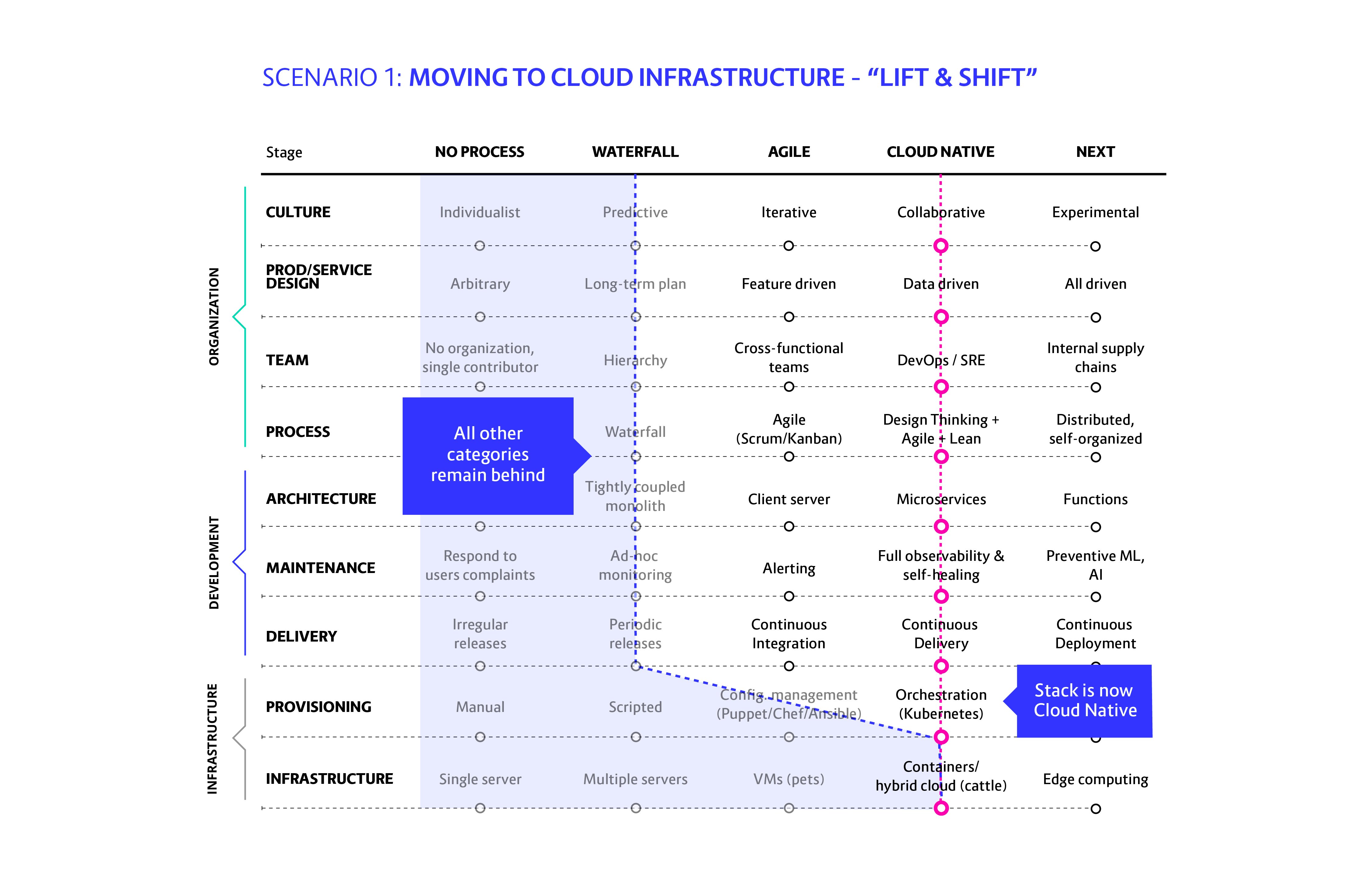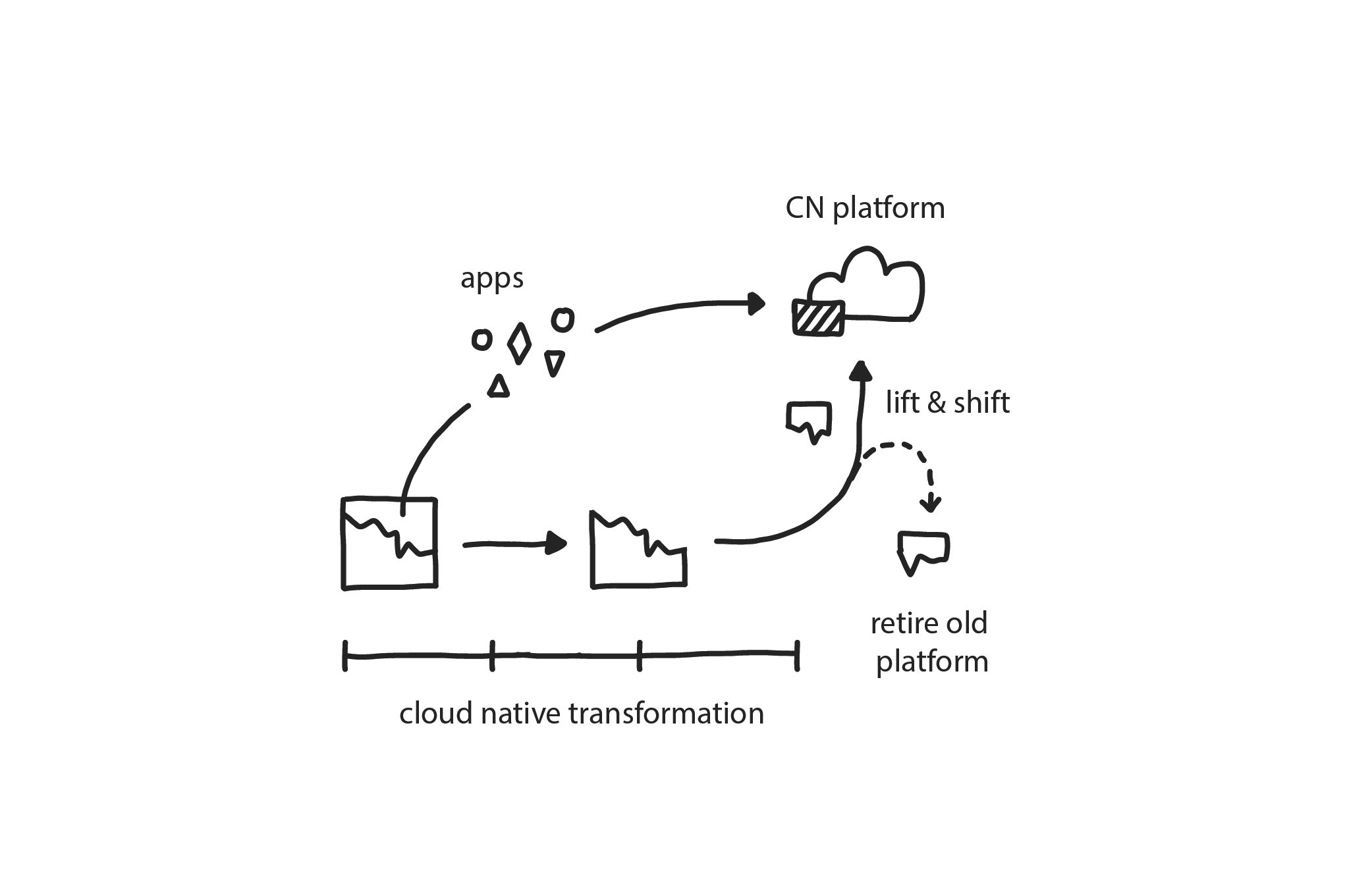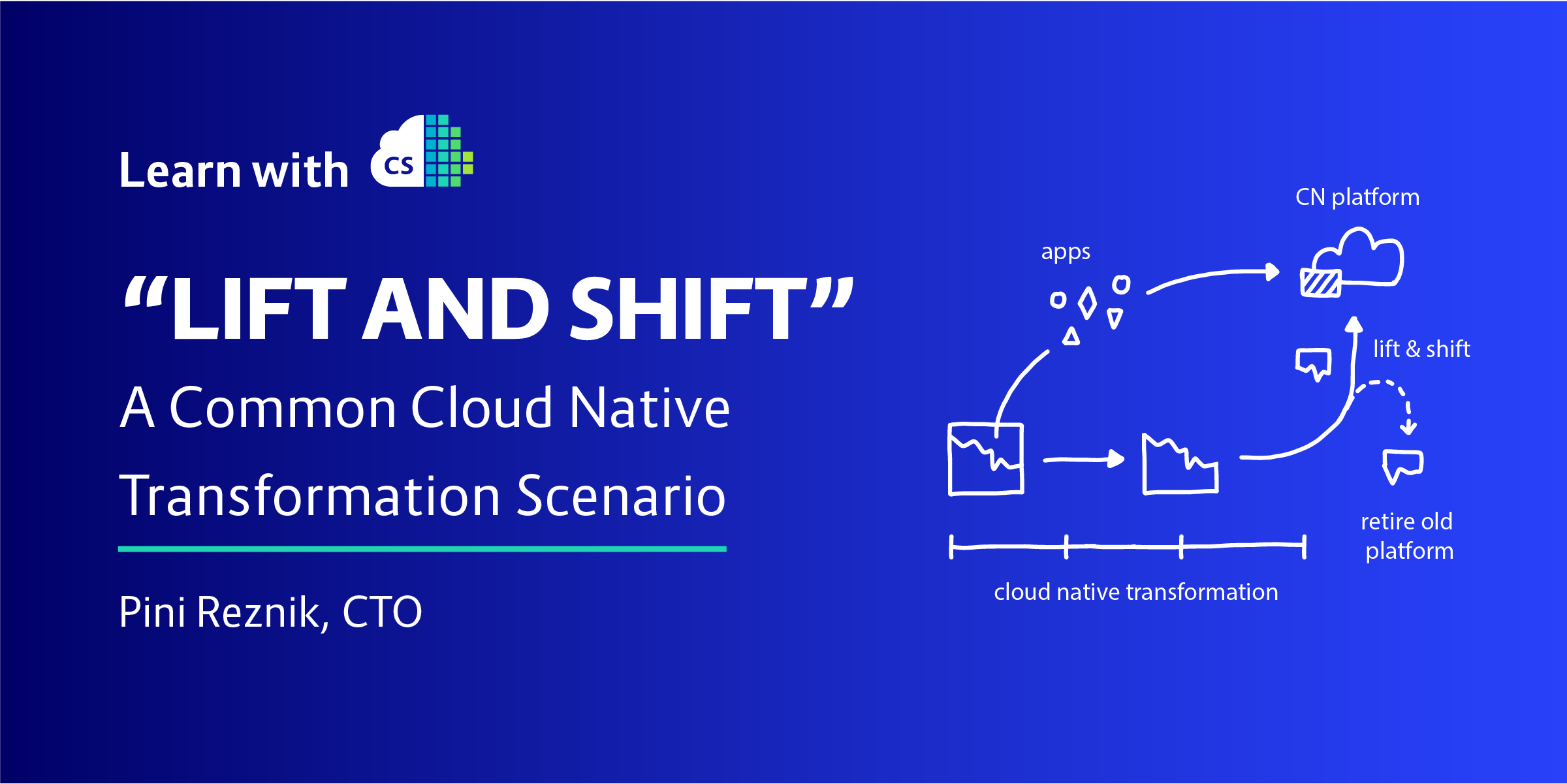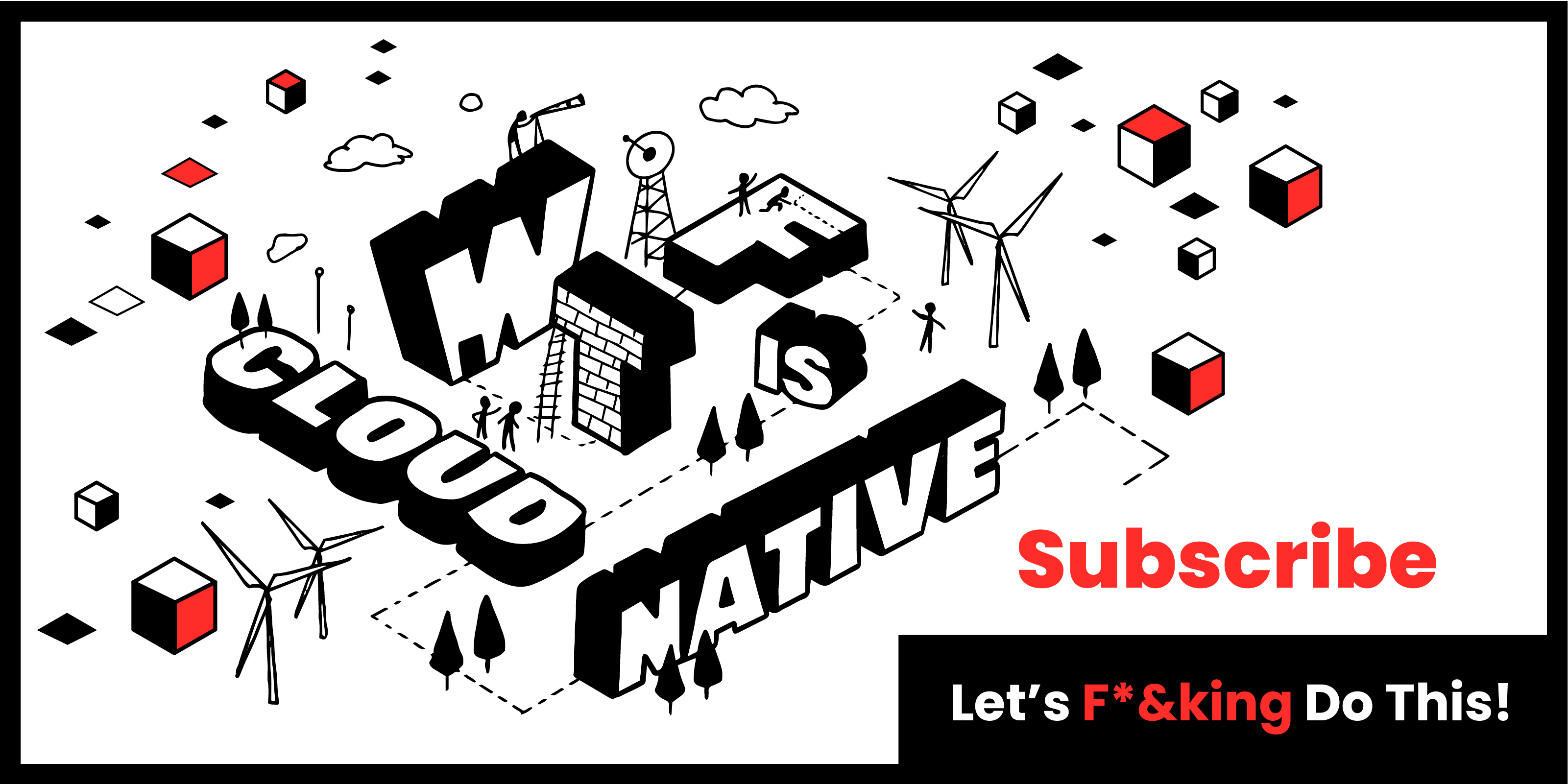Getting started with Cloud Native is deceptively easy. Anyone, anywhere—even with zero Cloud Native experience—can simply go online to any public cloud provider, click, and within 10 seconds have a fully-provisioned container running.
Many organisations will do just that, experimentally: start with one container, it goes well, and think, This is so easy. So then they add another small app, it also goes well, and based on this, they get approval from management to move forward with a full-fledged cloud migration.
But as the process moves forward, things get more complicated—exponentially so. Monitoring, storage, how different components interact, defining communications, networking security, etc. By the time a company realises there are problems inherent in their migration—serious ones—it’s too late. They have launched an expensive project with no way to turn back, yet have no idea how to right things.
They have skipped the first stage of a transformation, Think, during which an organisation must assess its current status as well as its goals, and create a realistic strategy for reaching those goals. From there, three more phases follow in a Container Solutions Cloud Native transformation: Design, in which decisions are made about processes and products; Build, in which the new tech systems are created, and a culture to support them is nurtured; and Run, in which engineers are trained to maintain the new Cloud Native system, and scale it up as business needs grow.
Many companies, through eagerness and sheer inexperience, skip some or even all these essential steps, however. When we are called in to help with a stalled or failing initiative, we frequently see that companies have stumbled on their journey because of a particular Cloud Native transformation scenario called ‘Lift and Shift’. This can lead to major, even migration-killing problems as a project progresses.
The good news is that it’s easy to catch at the outset. But there’s also bad news.
Making a Move
‘Lift and Shift’ typically arises when a company believes that going Cloud Native simply means picking up your current infrastructure and recreating it on AWS (or Azure, etc.). Companies plan to do this with the understanding, We’ll still be working just the same way we’ve always done, only now in the cloud!
The bad news (and it’s not so bad, really) is that a Cloud Native transformation requires changes on many levels, both technical and cultural, throughout the organisation. This is a very different way of doing things, and so human-centered things like process, leadership, and team structure need to evolve along with the stack.
Think about it like moving house: In this scenario, you would first pack up every single thing in your old home and move it all to your new one. Only then would you see if your old furniture fits into (and serves your needs in) the new space before deciding what to get rid of, and what should replace it.
Once everything is in place, a pattern called ‘Lift and Shift at the End’ might be called for: Moving functioning and stable legacy applications as-is from data centres to the new Cloud Native platform without re-architecture, at the very end of a Cloud Native transformation. (This and other patterns—designs for successfully moving your organisation to the cloud—can be found in our forthcoming O’Reilly book, ‘Cloud Native Transformation: Practical Patterns for Innovation.’)
Assessing Status
Properly describing an organization’s current status is a crucial first step in assessing its Cloud Native readiness. It’s how the Think phase of a CN transformation begins.
At Container Solutions, we do this for clients by sending a team of two Cloud Native engineers and a design strategist to conduct a two-day site visit. The CS team holds a discovery workshop with the development team, managers and other stakeholders, and also conducts in-depth interviews. The ultimate goal is to provide an accurate snapshot of where a company is right now, and where it needs to go.
Mapping Your Journey to Cloud Native
The main tool for uncovering and collecting this insight is the CS Cloud Native Maturity Matrix. We assess an enterprise along nine different axes to define, analyse, and describe organisational status and then validate the migration process.
Once plotted onto a full matrix, the results create a powerful visualisation of current organisational state. Constantly re-assessed as things progress, the data allows us to customise transformation goals and monitor progress. (To see how this works in more detail, please see 'The Cloud Native Maturity Matrix'.)
When we are called in to help right a stalled cloud migration in a company that has attempted a lift and shift, the assessment results in a Maturity Matrix that looks like this:

In this scenario we see: A company with Waterfall or Agile culture, architecture, design and processes that has attempted to ‘lift and shift’ their current system (and comfortable way of doing things) onto the cloud. On the Maturity Matrix, Infrastructure has moved all the way to Containers/Hybrid Cloud while all other categories remain rooted around Waterfall/Agile status.
What will happen: Operating costs will go up. Few, if any, benefits will be gained. Time and money will be wasted: You now have a bunch of expensive complex tools on top of the same system you always had—but you are not faster or cheaper.
A better approach: Focus on moving all points on the Maturity Matrix to their Cloud Native state. For most organisations this likely means starting with Architecture and Process axes while simultaneously working to gradually evolve along the Culture axis. However, if there are parts of the original system that are stable and seldom changed, these can indeed be moved to the cloud: ‘Lift and Shift at the End’

The practical solution: An honest and thorough assessment of an organisation’s current state is essential before moving forward in any aspect of a cloud migration. Start at the very beginning of the Cloud Native Transformation Roadmap with Stage One, Think. An assessment of where you stand—and what it will take to get where you want to go—is the first step toward gaining a clear vision, a high-level architectural plan, and alignment among leadership in your company.
To help your organisation start thinking about its challenges and opportunities, let us give you our Cloud Native Transformation cards. Click below to learn more!



 Previous article
Previous article
